Mardi Gras Secrets: Tour the Warehouse Where Floats Live Forever
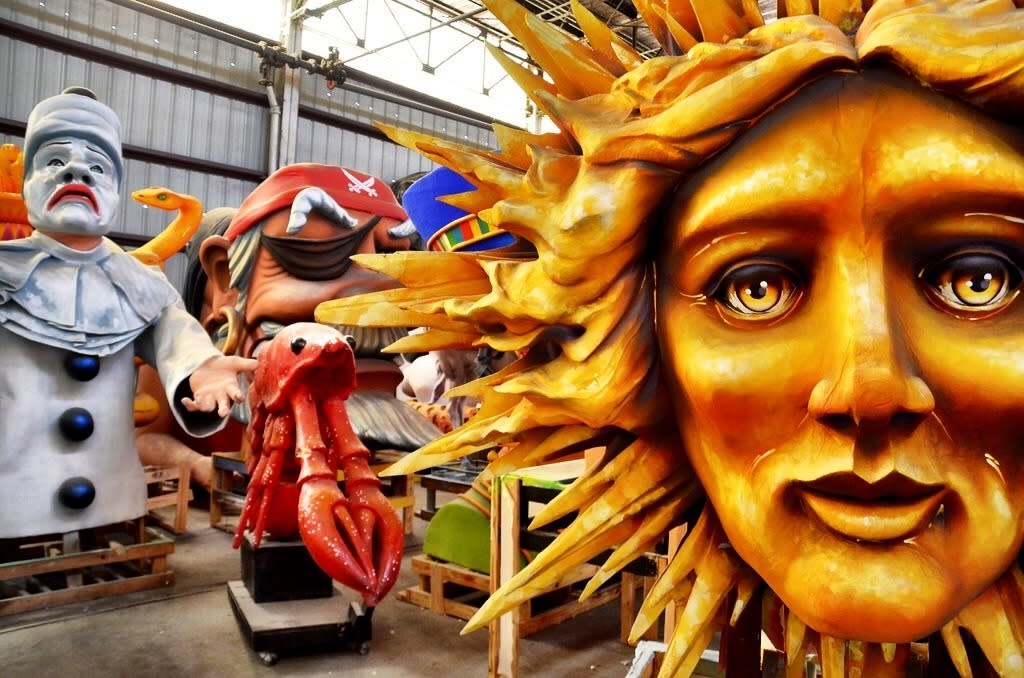
Colorful storage warehouse at Mardi Gras World (Photo: Matt Long/LandLopers)
New Orleans is a city of extremes. It seems everything from meals to drinks and of course celebrations are all overly large, as if the city exists on a scale of its own. At no time is that more evident than during Mardi Gras. At the heart of this celebration are the colorful parades and floats — made possible, as it turns out, by the work of predominately one family-run company, Blaine Kern Studios.
The Kern family has been making elaborate floats for generations; they started in the 1940s and their creations can now be seen in events all over the world. At the heart of this artistic empire, though, is New Orleans’ Mardi Gras, for which they have made thousands of floats featuring everything from Marilyn Monroe to fantastical monsters. In the 1980s, the company created Mardi Gras World, a sort of museum devoted to all things Mardi Gras and more importantly, a showcase for some of their most fantastical work.

Fearsome characters (Photo: Matt Long/LandLopers)
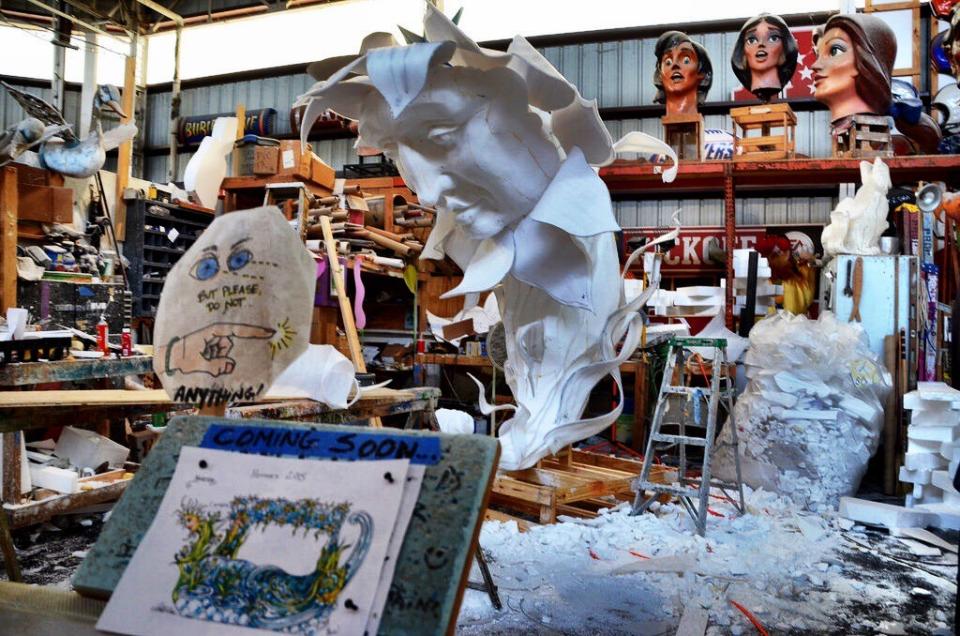
The art of creating a float (Photo: Matt Long/LandLopers)
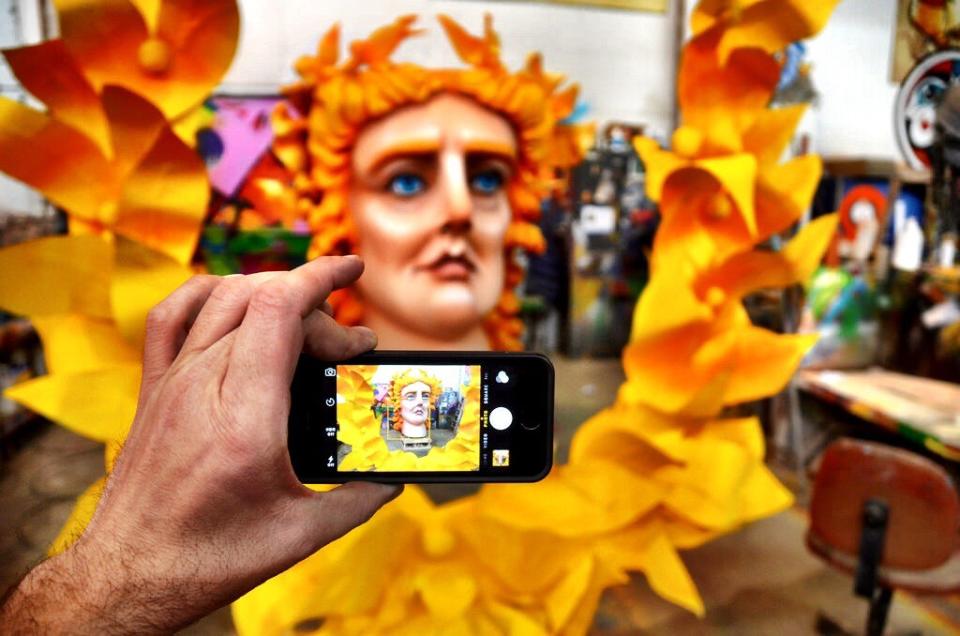
Almost done! Floats prepare for the big events. (Photo: Matt Long/LandLopers)
Located alongside the Mississippi River, the Blaine Kern Studios warehouse is open to visitors via day tours, and is one of many spread out around the region that are filled to the rafters with over-the-top floats on a scale that makes one feel like Lilliputian. Once a float is constructed and used, it is never discarded — instead, it’s stored for the off chance that it might be reused at some point in the future.
Related: New Orleans Off the Beaten Path: The Stuff That Tourists Always Miss
The tour covers the history of Mardi Gras, and of course that was interesting to hear about, but I couldn’t help but get excited as the tour entered the massive warehouse itself. Mardi Gras is a year-round activity for these folks, and artists were hard at work building new floats and designing others for future celebrations. It really is amazing what they can create out of such simple materials as wood and Styrofoam.
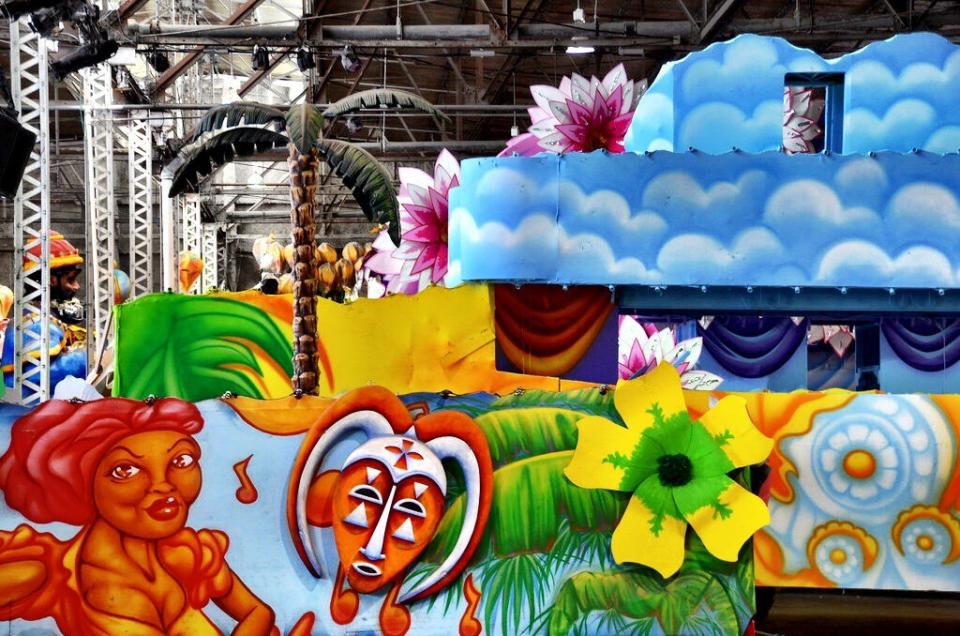
Large floats from which people throw those famous beads. (Photo: Matt Long/LandLopers)

New Orleans’ favorite son in float form. (Photo: Matt Long/LandLopers)
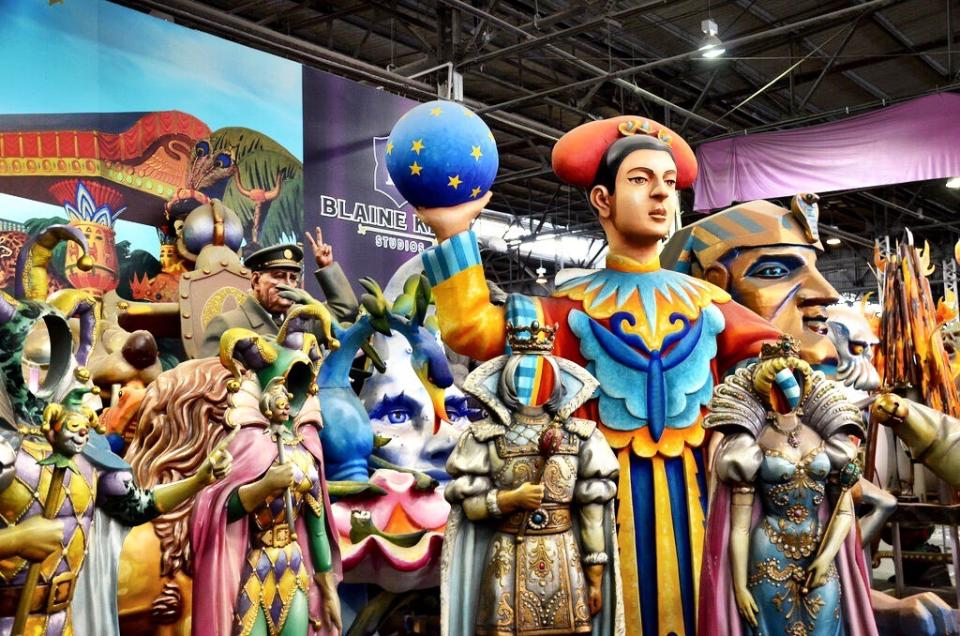
A panoply of characters waiting for their return to the streets. (Photo: Matt Long/LandLopers)
It’s also interesting to walk through and see how floats and characters have changed over time. It’s really a reflection of modern pop culture, and I could easily identify smaller floats from the 1950s and 60s that showcased cartoons and politicians, and then the more modern ones that took their cues from kids’ movies and sports heroes. It was hard not to feel like a kid again myself, walking amongst the oversized floats and gawking at their bright colors and elaborate designs. Even though these have been sitting in a warehouse, mostly forgotten, I could easily imagine how fun they must have been to see in a parade, sparkling and festooned with lights meant to shock and amaze.
Related: How Not to Get Arrested at Mardi Gras

From the traditional to the quirky. (Photo: Matt Long/LandLopers)

Your guess is as good as ours, but we love the colors. (Photo: Matt Long/LandLopers)

Scary moments of Mardi Gras design. (Photo: Matt Long/LandLopers)
WATCH: The Burmese Boat Festival That Puts Mardi Gras to Shame
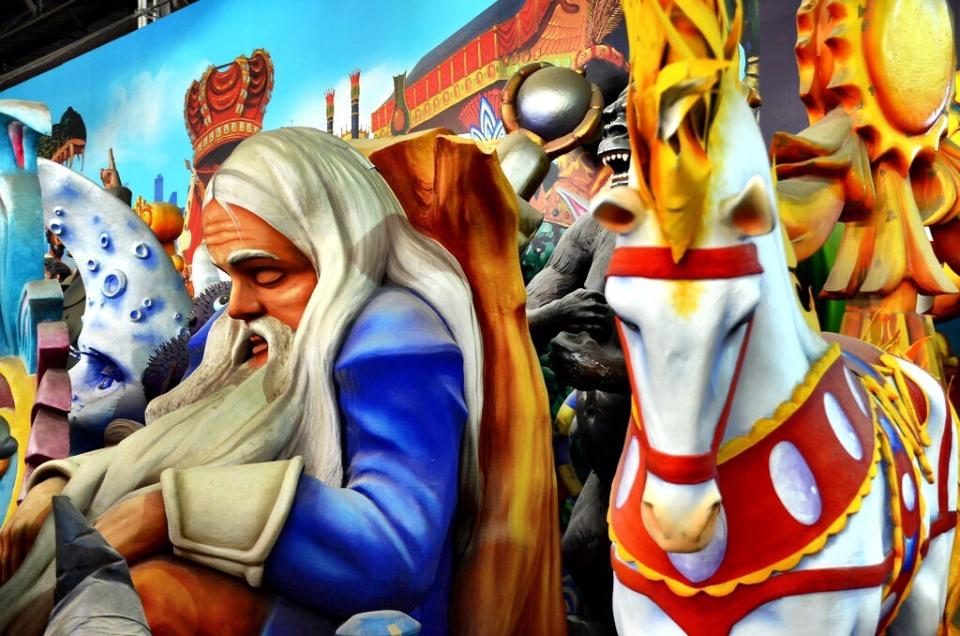
This is invariably what happens to every Mardi Gras reveler. (Photo: Matt Long/LandLopers)
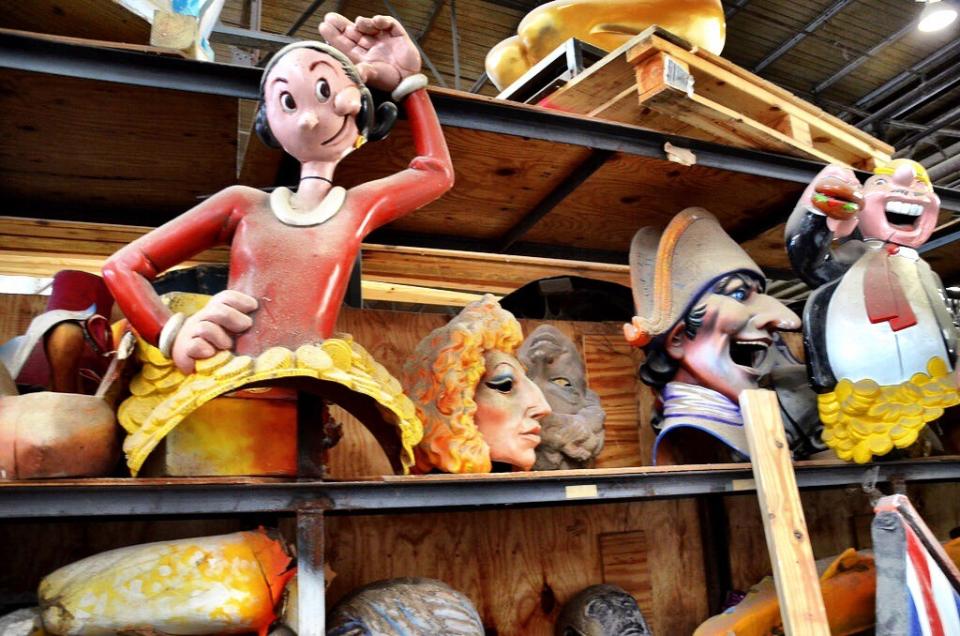
The warehouse stores older floats from another generation of Mardi Gras artists. (Photo: Matt Long/LandLopers)

Floats like you must. (Photo: Matt Long/LandLopers)

Would the Bard approve? (Photo: Matt Long/LandLopers)
New Orleans is about much more than Mardi Gras and Mardi Gras is much more than floats, but that doesn’t mean they aren’t important. For many of us, these iconic moving displays are symbols of the city — and to learn more about them, how they’re made and why is admittedly a very touristy activity, but a fun one as well.
WATCH: 10 Years Post Katrina, NOLA’s House of Dance & Feathers Dances Back to Life
Let Yahoo Travel inspire you every day. Hang out with us on Facebook, Twitter, Instagram, and Pinterest.

